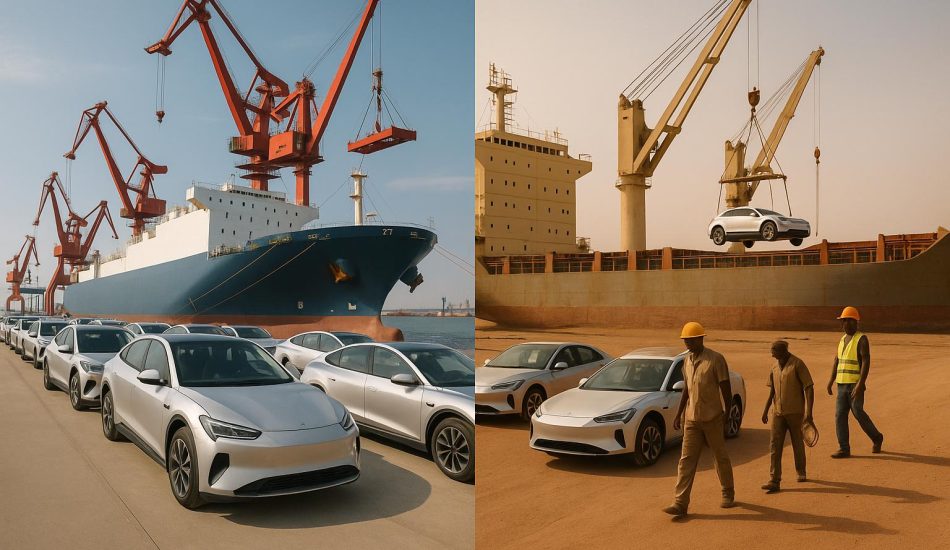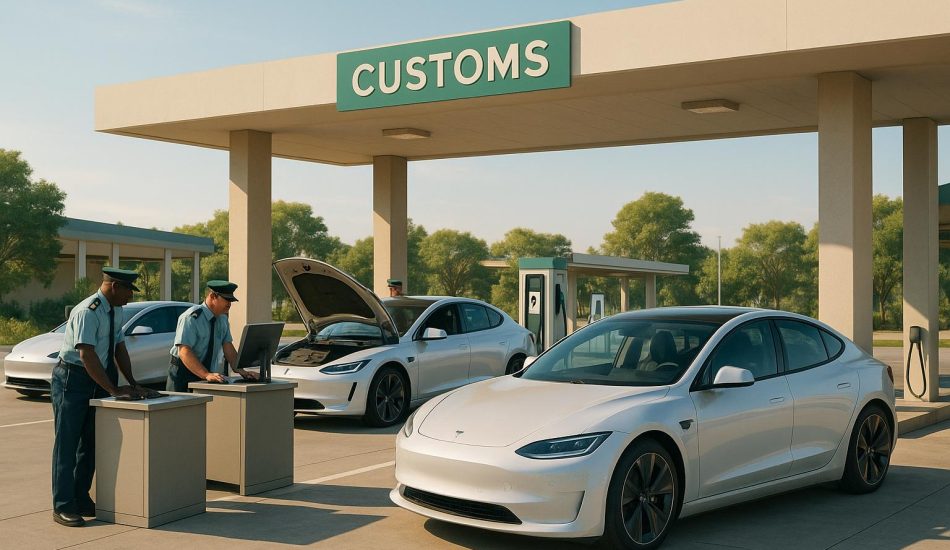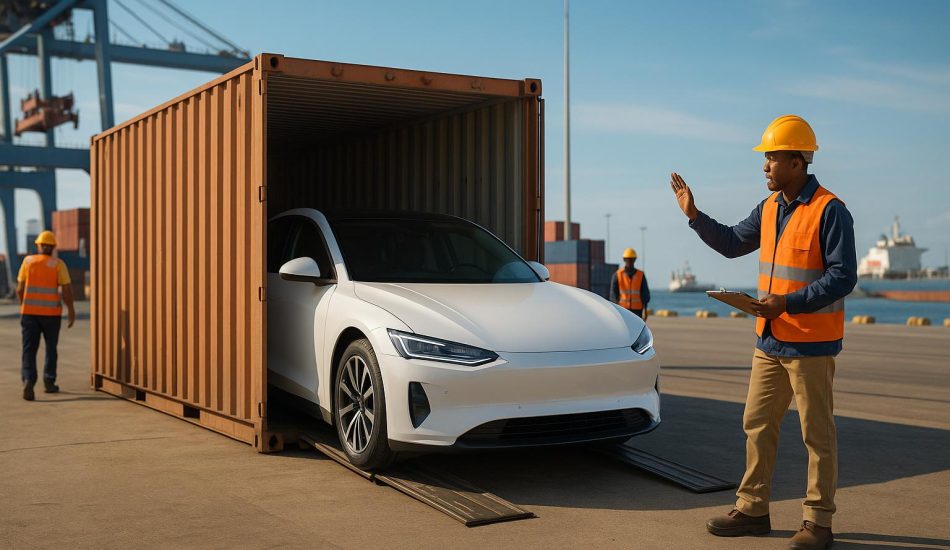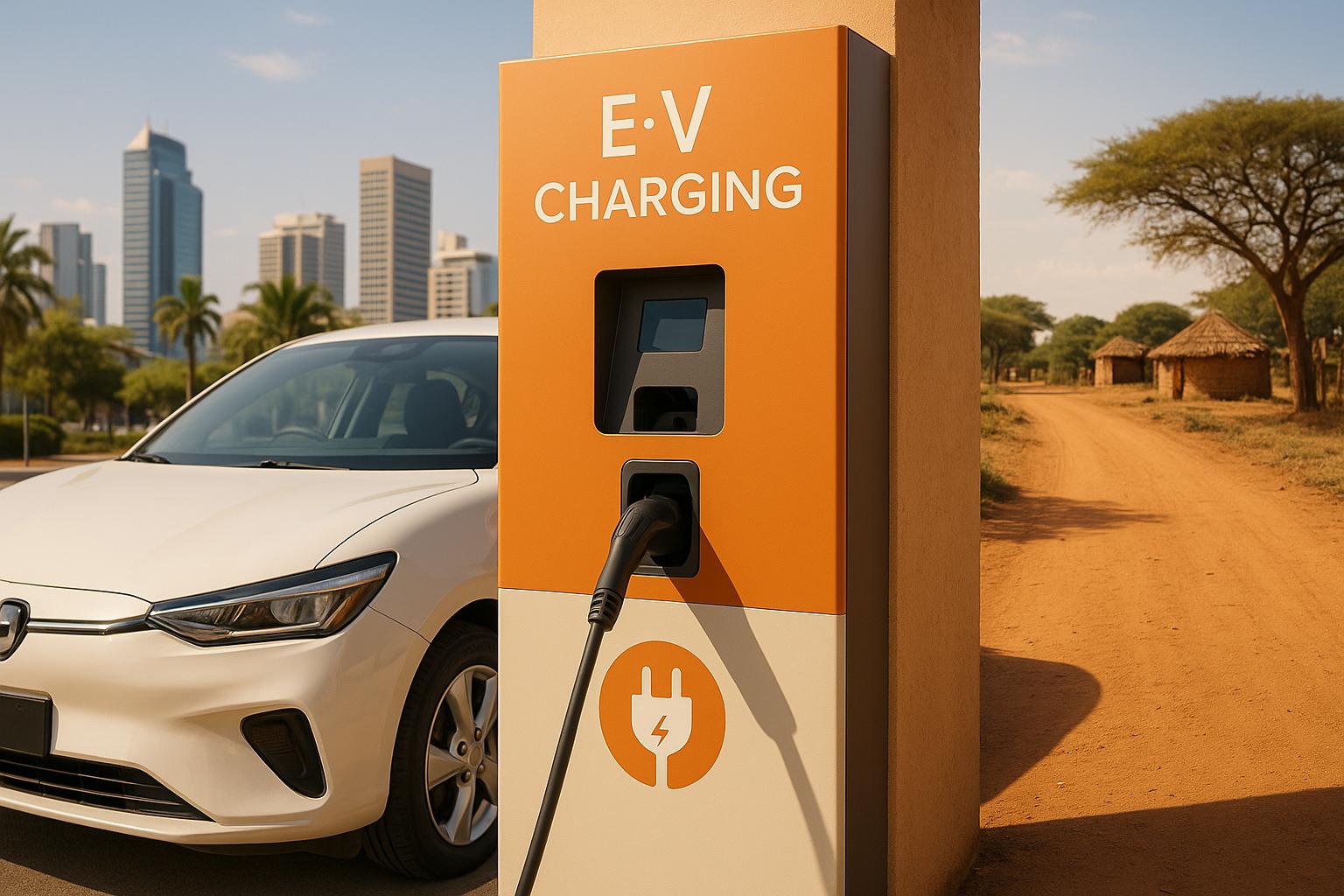
Africa’s electric vehicle (EV) market is growing but faces a major challenge: inconsistent policies between East and West Africa. East African countries like Kenya, Rwanda, and Ethiopia are driving EV adoption with tax breaks, infrastructure development, and bold moves like Ethiopia’s ban on internal combustion engine (ICE) imports. Meanwhile, West African nations, led by Ghana and Nigeria, are moving slower, focusing on emission rules and basic regulations with limited financial incentives.
Key Highlights:
- East Africa: Offers tax exemptions, promotes electric motorcycles, and invests in solar-powered charging stations.
- West Africa: Focuses on emission standards and import limits but lacks widespread financial support or infrastructure.
- Market Growth: Africa has 30,000 EVs as of May 2025, with high adoption rates for electric buses and motorcycles.
The challenge: Fragmented policies make cross-border trade and scaling difficult. Aligning standards could reduce costs, improve accessibility, and boost EV adoption continent-wide.
Africa’s EV Revolution & Urban Mobility Solutions | Anazi Zote-Piper
EAC EV Standards Overview
Countries within the East African Community (EAC), including Kenya, Rwanda, and Ethiopia, are taking significant steps to encourage the use of electric vehicles (EVs). Their strategies focus on fiscal incentives, infrastructure development, and expanding the use of electric motorcycles. These efforts are designed to meet current transportation demands while supporting long-term environmental goals, laying the groundwork for a thriving EV market in the region.
Tax Breaks and Government Support
EAC nations are offering generous tax incentives to speed up EV adoption. For instance, Rwanda has eliminated import duties on electric vehicles, making it an attractive market for EV buyers in the region. Kenya provides VAT exemptions and reduced import duties on electric vehicles and charging equipment. The country has set an ambitious goal: 5% of all new vehicle registrations will be electric by 2025, with a requirement that imported EVs maintain at least 80% of their original battery capacity. Ethiopia took a bold step in 2024 by banning the importation of internal combustion engine vehicles, becoming the first country in the world to do so. Additionally, Ethiopia supports local EV manufacturing by offering duty-free knock-down kits for assembly, fostering job creation and industrial growth. Special EV charging tariffs further reduce operating costs, making EVs more affordable. Together, these financial measures highlight the potential for unified policies across the region.
Electric Motorcycle Priority
Electric motorcycles are a key focus in the region, reflecting the dominance of public transport in urban areas across Africa. Rwanda, for example, plans to ban internal combustion engine motorcycles in Kigali by 2025, a move expected to drive demand for electric alternatives. This approach aligns with the growing acceptance of EVs across the continent. Electric motorcycles are particularly well-suited to the region, as they require less upfront investment and simpler charging infrastructure, making them easier to deploy in both cities and rural areas. By addressing local transportation needs, this strategy supports the broader adoption of EVs throughout Africa.
Charging Station Development
EAC countries are making strides in building charging infrastructure through collaborations between public and private sectors. Solar-powered charging stations have become a priority to address the challenges posed by unreliable power grids. Tanzania is spearheading efforts to standardize charging systems, with a draft E-mobility framework that aligns with global protocols to ensure safety, interoperability, and compatibility with international EVs. Kenya and Tanzania are also expanding their charging networks, focusing on solar-powered and off-grid solutions, particularly in rural and peri-urban areas. However, challenges such as inconsistent electricity supply, limited technical expertise, and the high cost of installation persist. Regional cooperation is seen as vital to overcoming these obstacles and supporting the growing number of EVs. These efforts stand in contrast to policies in West Africa, which will be discussed next.
West Africa EV Policies Overview
While countries in the East African Community (EAC) are actively pushing for electric vehicle (EV) adoption with financial and infrastructure incentives, West African nations are taking a more cautious approach. This reflects a balancing act between environmental goals and economic realities. As of 2025, only Ghana and Nigeria have released national EV strategies. Unlike the proactive measures seen in EAC nations, West African policies lean toward regulatory caution rather than aggressive incentives.
Emission Rules and Import Limits
The Economic Community of West African States (ECOWAS) is working to standardize vehicle emission rules and import age limits across its member states. These efforts aim to reduce pollution from older, high-emission vehicles and encourage a shift toward electric options. However, enforcement remains inconsistent, weakening the overall effectiveness of these policies. This inconsistency allows older internal combustion engine vehicles to continue dominating some markets, creating uneven conditions that slow EV adoption and complicate regional strategies.
Limited Financial Support
Compared to the tax breaks and incentives offered in EAC nations, financial support for EVs in West Africa is minimal. Benin is a notable exception, offering 0% VAT and duty exemptions on electric vehicles, along with investments in solar-powered charging stations. Ghana has introduced tax incentives and supports local EV assembly efforts, while Nigeria has allocated $100 million to develop charging infrastructure. Despite these initiatives, they remain isolated efforts, and EVs are still largely affordable only to wealthier consumers. This lack of widespread financial support limits the potential for broader market growth.
Regional Policy Coordination
ECOWAS is also working to align EV policies and create standardized charging systems across its member states. Nigeria, with its large market and significant investments in charging infrastructure, has the potential to lead these efforts. Meanwhile, Ghana’s stable policy framework and focus on local EV assembly could serve as a blueprint for others. However, challenges such as varying levels of economic development, differing government priorities, limited technical expertise, and unreliable electricity grids continue to hinder regional coordination. This fragmented policy landscape contrasts sharply with the more unified approach seen in EAC nations and sets the stage for further comparison in the next section.
sbb-itb-99e19e3
EAC vs West Africa Policy Comparison
When it comes to EV policies, East Africa (EAC) and West Africa take distinctly different paths. The EAC nations lean heavily on bold incentives and broad strategies to encourage adoption, while West African countries proceed with cautious steps and limited financial backing.
Side-by-Side Policy Comparison
The policy approaches of these regions highlight contrasting philosophies on electric vehicle adoption. The EAC prioritizes rapid change with financial incentives and regional coordination, whereas West Africa focuses more on regulatory measures with modest government spending.
| Feature | EAC (East Africa) | West Africa |
|---|---|---|
| Policy Scope | Broad, harmonized, and regionally aligned | Fragmented, country-specific, and less cohesive |
| Government Support | Tax exemptions, investments, and support for local manufacturing | Limited incentives, with emphasis on import restrictions |
| Charging Infrastructure | Expanding networks backed by regional energy projects | Slow infrastructure rollout with minimal investment |
| Emissions Standards | Adopting global benchmarks, including some bans | Basic regulations with limited enforcement |
| Market Accessibility | Boosted by incentives and platforms like EV24.africa | Hampered by high costs and limited financing options |
EAC policies showcase proactive measures like Ethiopia’s ban on internal combustion engine (ICE) imports. Kenya, for instance, has set an ambitious target of making 5% of all newly registered vehicles electric by 2025. In contrast, only Ghana and Nigeria have outlined national EV strategies in West Africa as of 2025.
Rwanda’s planned ICE motorcycle ban is another example of targeted efforts in the EAC, while similar initiatives remain absent in West Africa. These policy differences significantly influence EV costs, accessibility, and even cross-border trade.
Effects on EV Access and Costs
These policy gaps directly impact the affordability and availability of electric vehicles. In the EAC, countries like Kenya and Rwanda have eliminated VAT and import duties on EVs and related equipment, dramatically lowering upfront costs for consumers and businesses alike. This approach makes EVs more accessible to middle-class buyers and commercial fleet operators.
On the flip side, Uganda’s decision to reinstate a 25% import duty on EVs serves as a cautionary tale. This policy reversal has shaken investor confidence and slowed EV adoption, demonstrating how inconsistent policies can hinder market growth.
Cross-border trade also faces hurdles. Platforms like EV24.africa must navigate varying tax structures and regulations. For example, an EV purchased in Kenya with zero import duty could face entirely different costs and rules when transported to countries like Nigeria or Ghana.
Commercial fleets in the EAC enjoy a clear advantage thanks to stronger incentives. While both regions aim to renew fleets for environmental and economic reasons, the EAC’s comprehensive support makes electric buses and delivery vehicles more attractive. In contrast, West African fleet operators grapple with higher costs and limited assistance.
Market accessibility remains a challenge, albeit for different reasons. The EAC addresses affordability with direct financial incentives, whereas West African markets are constrained by high costs and scarce financing options. This uneven progress complicates the development of a unified EV market across the continent.
Finally, with 60–80% of urban trips in Africa relying on public transport, these policy differences carry significant weight. EAC initiatives focus on electrifying buses and motorcycles to address this reality, while West Africa’s slower infrastructure development delays the transition of these critical transport modes.
Regional Alignment Potential and Future Outlook
The differences in EV policies between East and West Africa create both hurdles and opportunities. By May 2025, Africa’s EV fleet had grown to 30,000 vehicles, highlighting the increasing relevance of regional coordination. These developments prompt a closer look at the advantages and challenges of aligning policies across the continent.
Benefits of Policy Alignment
Harmonized EV policies could unlock a range of economic and operational advantages. For starters, consistent standards and predictable resale values can boost confidence among banks and leasing companies. This, in turn, can lead to more competitive financing options for EVs. With greater market confidence, adoption rates are likely to improve, paving the way for investments in manufacturing, infrastructure, and technology.
Standardized policies would also simplify supply chains. Right now, manufacturers have to deal with differing tax systems, safety regulations, and import procedures. A unified framework could enable economies of scale, cutting production costs and making EVs more affordable across the region.
Consumers would also benefit from aligned quality standards, which could improve trust in EVs. Infrastructure development, particularly for charging networks, would progress faster under unified policies. When technical specifications, payment systems, and operational standards are consistent, cross-border expansion becomes much easier. This is particularly important in Africa, where 60–80% of urban trips rely on public transport. Standardized charging solutions for electric buses and motorcycles could play a crucial role in meeting this demand.
How EV24.africa Supports Cross-Border Trade
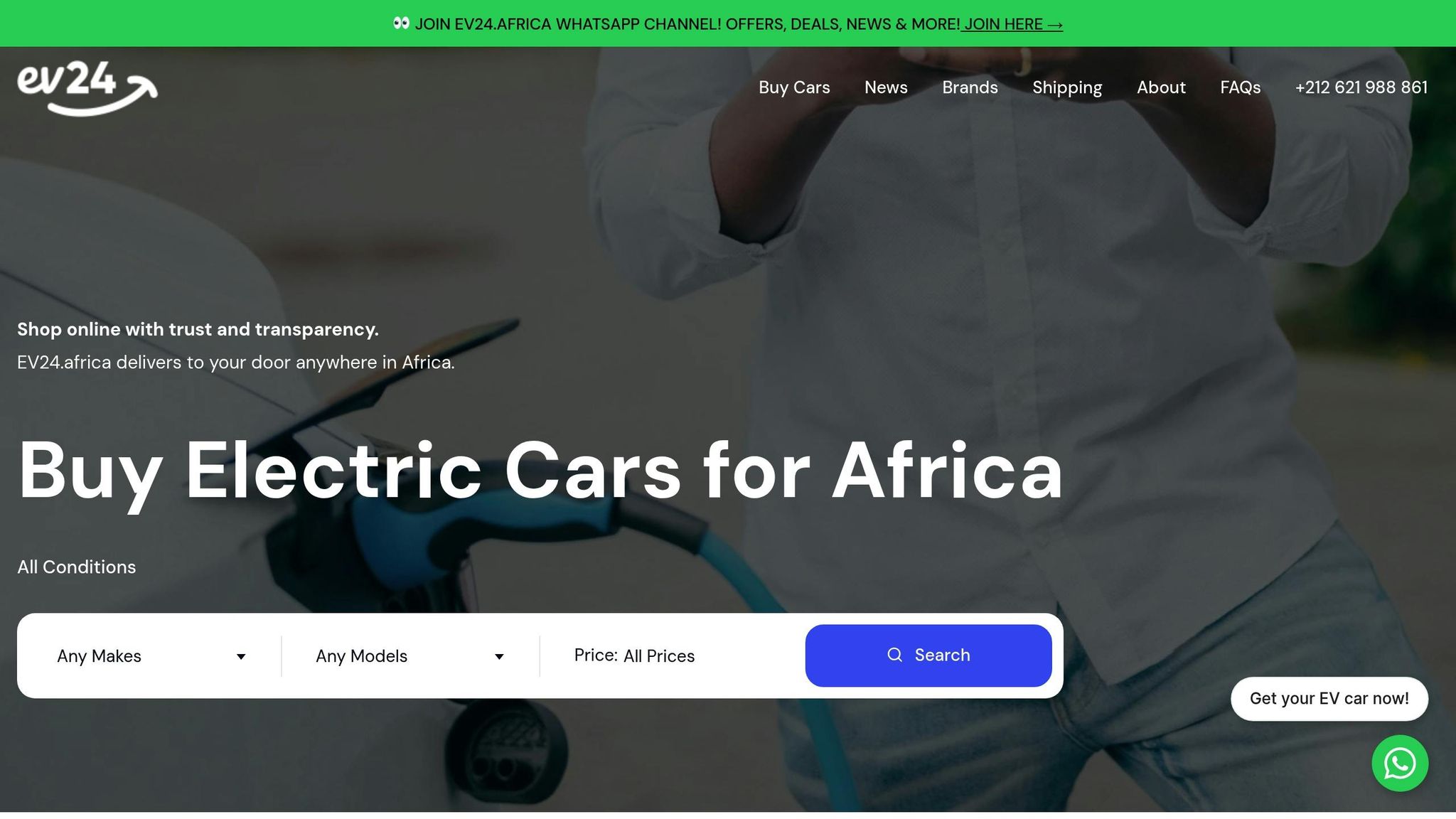
EV24.africa provides a clear example of how unified platforms can address regional policy gaps. This marketplace operates across all 54 African nations, managing the complexities of shipping, customs clearance, and local registration. These processes would become even smoother under harmonized policies.
The platform simplifies cross-border EV trade by offering a seamless experience. It handles logistics, ensures transparent pricing, and provides consistent processes, making it easier for buyers and sellers to navigate the market.
EV24.africa also offers a wide range of brands, including Tesla, BYD, Volkswagen, XPeng, and Leapmotor, catering to diverse budgets and preferences. Its transparent pricing and financing options help build trust in cross-border transactions. With harmonized policies, regulatory barriers and associated costs could be reduced, increasing trade volumes and improving access to EVs across regions.
Barriers to Policy Alignment
Despite the benefits, aligning policies across regions faces significant challenges. Financial disparities and infrastructure gaps are major obstacles. For instance, while the EAC provides comprehensive tax exemptions and government support for EVs, West Africa struggles with limited financial resources, slower infrastructure development, and unreliable power grids.
National priorities also vary widely, complicating efforts to harmonize policies. Ethiopia’s groundbreaking ICE import ban in 2024 and Rwanda’s planned ban on ICE motorcycles in Kigali by 2025 reflect ambitious environmental goals. However, these policies may not align with the economic priorities of other nations.
Organizations like the African Continental Free Trade Area (AfCFTA) and public-private partnerships are essential for coordinating policy, infrastructure, and trade initiatives. Yet, achieving consensus among countries with differing interests requires significant diplomatic and technical collaboration.
The fragmented approach seen today underscores the difficulty of achieving regional alignment. As of 2025, only Ghana and Nigeria in West Africa have outlined national EV strategies. Overcoming this divide will require strong political will, financial investment, and technical cooperation that goes beyond individual national interests.
Africa’s low motorization rate – 43 vehicles per 1,000 people compared to the global average of 197 – presents both an opportunity and a challenge. While this indicates substantial growth potential for EVs, it also reflects the fact that many nations are still in the early stages of developing basic transportation policies. Achieving regional coordination may be complex, but it holds the potential to transform the market in the long run.
Conclusion
East African and West African approaches to EV policies are at a pivotal moment. East African countries have embraced structured frameworks that include tax incentives, bans on internal combustion engine (ICE) vehicles, and strong government backing. In contrast, West African nations, led by Ghana and Nigeria, have adopted more fragmented strategies with limited financial resources and slower infrastructure development.
These differing approaches create both hurdles and opportunities. East Africa’s bold measures, such as ICE bans and regulatory incentives, stand in stark contrast to West Africa’s more cautious pace. Yet, both regions hold incredible potential for growth. This divergence highlights the evolving dynamics of the African EV market and the pressing need for coordinated policies.
Despite these differences, the continent is already seeing progress, with over 30,000 EVs in operation and strong year-over-year growth. To unlock even greater potential, harmonized standards and incentives are essential.
Platforms like EV24.africa demonstrate how technology can help close policy gaps by simplifying processes like customs, local registration, and pricing transparency, ultimately facilitating cross-border EV trade.
Moving forward, achieving a unified EV framework will require strong political will and collaboration, particularly through initiatives like the African Continental Free Trade Area. While financial constraints and varying priorities remain, improving funding, standardizing infrastructure, and accelerating EV adoption are critical steps.
The key lies in blending East Africa’s policy-driven momentum with West Africa’s market potential, especially Nigeria’s large consumer base. With 60–80% of urban trips relying on public transport, unified EV policies could revolutionize not just personal mobility but entire transportation systems across Africa.
FAQs
How do electric vehicle policies differ between East and West Africa?
East and West Africa are taking different paths when it comes to electric vehicle (EV) policies, and these differences reflect each region’s economic and infrastructural realities. In East Africa, the focus is on creating localized EV solutions, such as electric motorcycles and public transport options, to tackle urban mobility issues head-on. Meanwhile, West Africa is leaning toward policies that emphasize building infrastructure – think charging stations – and encouraging private EV ownership.
Although both regions are making progress in their own ways, there’s significant potential in unifying standards across the continent. For instance, syncing regulations around battery recycling and import standards could streamline efforts and make EVs more accessible for everyone. Platforms like EV24.africa, which operate across all 54 African countries, play a key role in this shift by offering access to a variety of EVs and related services, helping to bridge gaps and drive adoption forward.
What are the benefits of aligning EV policies across different African regions for consumers and manufacturers?
Bringing electric vehicle (EV) policies into alignment across African regions offers clear benefits for both buyers and manufacturers. For consumers, standardized regulations simplify the buying process, making it easier to compare models and access vehicles across borders. On the manufacturing side, unified standards reduce production and distribution hurdles, opening up broader market opportunities and easing compliance.
This kind of policy alignment encourages collaboration within the EV industry, driving progress toward more affordable and widely available electric vehicles throughout the continent.
What obstacles prevent West African countries from adopting EV policies as robust as those in East Africa?
West African nations encounter a range of hurdles when it comes to implementing effective electric vehicle (EV) policies, especially when compared to East Africa. A major issue is the limited infrastructure – charging stations are sparse, making it tough for drivers to rely on EVs for everyday transportation. On top of that, government incentives to promote EV adoption are often missing, leaving little motivation for consumers to make the switch.
The region also faces challenges with energy reliability. Frequent power outages and inconsistent electricity supply make it hard to depend on electricity as the main fuel source for vehicles.
Economic barriers further complicate the situation. With lower average income levels across many West African countries, EVs remain out of reach for most consumers. Adding to the complexity is the absence of unified regional standards or policies, which stifles collaboration and prevents the creation of a cohesive EV market in the region.


